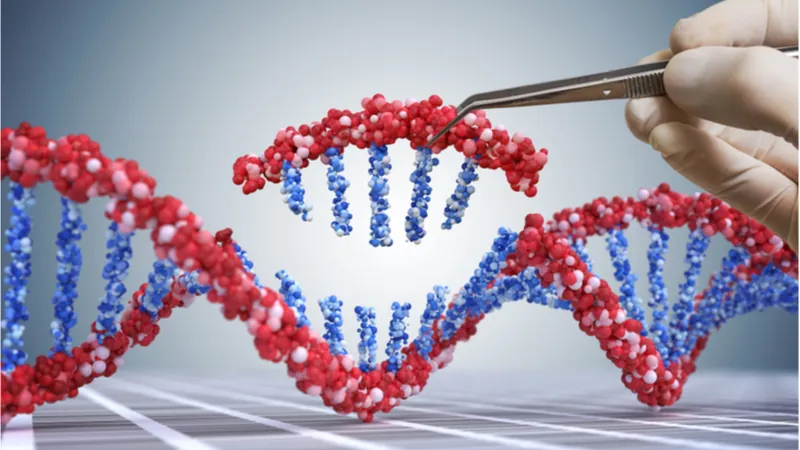Researchers have successfully used the CRISPR/Cas9 gene editing tool to destroy Ewing’s sarcoma and chronic myeloid leukemia tumor cells by targeting the fusion genes responsible for these tumors [1].
Fusion genes, a feature in many different types of cancer, arise when a mutation fuses two genes together, which typically happens when the DNA sequence between these genes is deleted. The resulting fusion gene is still functional in that it encodes proteins, but the proteins it encodes are different from those of the original genes, and this can have unintended consequences, including the development of cancer.
Fusion genes are present in various cancers, including prostate, breast, lung and brain, and up to around 20% of all cancers include these mutant genes.
Researchers from the Spanish National Cancer Research Center (CNIO) were able to use CRISPR/Cas9 editing techniques to cause targeted breaks in the nuclear DNA in mouse models of Ewing’s sarcoma and chronic myeloid leukaemia. They made two cuts in the introns, the non-coding areas of the gene, which are located at each end of the fusion gene.
The cancer cell then responds by attempting to repair the breaks in its DNA by joining the cut ends. This results in the complete removal of the fused gene located between the two cuts. Because the cancer cell depends on the fused gene for its continued survival, this repair, in effect, causes the cancer cell to destroy itself.
The team at CNIO will now be carrying out further studies to assess the efficiency and safety of this novel approach to see if it could be translated to humans. The researchers will also be testing the method on other types of cancers that are caused by fusion genes.
Fusion oncogenes (FOs) are common in many cancer types and are powerful drivers of tumor development. Because their expression is exclusive to cancer cells and their elimination induces cell apoptosis in FO-driven cancers, FOs are attractive therapeutic targets. However, specifically targeting the resulting chimeric products is challenging. Based on CRISPR/Cas9 technology, here we devise a simple, efficient and non-patient-specific gene-editing strategy through targeting of two introns of the genes involved in the rearrangement, allowing for robust disruption of the FO specifically in cancer cells. As a proof-of-concept of its potential, we demonstrate the efficacy of intron-based targeting of transcription factors or tyrosine kinase FOs in reducing tumor burden/mortality in in vivo models. The FO targeting approach presented here might open new horizons for the selective elimination of cancer cells.
Conclusion
While it is no doubt going to be some years before we see an approach like this being attempted in humans, if successful, the strategy could be potentially used to treat a range of fusion gene-based cancers. It also paves the way for other CRISPR/Cas9 gene editing therapies to be developed.
Another positive is that because these fusion genes are only found in cancer cells, they are highly specific targets, and attacking them has no effect on healthy cells. This means that gene therapy vectors could be broadly used to deliver CRISPR/Cas9 into tissues without harming healthy cells.
Literature
[1] Martinez-Lage, M., Torres-Ruiz, R., Puig-Serra, P., Moreno-Gaona, P., Martin, M. C., Moya, F. J., … & Bueno, C. (2020). In vivo CRISPR/Cas9 targeting of fusion oncogenes for selective elimination of cancer cells. Nature Communications, 11(1), 1-14.



